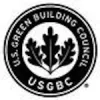The more the Application Guide for Multiple Buildings and On-Campus Building Projects (AGBMC) is refined the less it seems to apply to industrial projects. Industrial projects (for both LEED-NC and LEED-EB O&M) are often a set of buildings that, together, have a single purpose. That purpose is generally to make a consumer product. The primary building (or buildings) and its ancillary buildings function as a single facility. None have an autonomous function. That is to say, they don’t comprise a stand-alone function or use without operations of the other buildings. Each building serves the function of the whole and, if they are detached, it is for operational efficiency. These (new) projects are typically all built under the same owner initiative using any number of various contracting methods. They are built during the essentially same time period, with the ultimate goal being “in production” or “job one”. The detached buildings alone may or may not meet the MPR minimum size or FTE requirements. If they are inside the LEED Boundary, their energy and water consumption needs to be taken into consideration. If they were to be omitted from the LEED Boundary area, it would start to look like a gerrymandered piece of Swiss cheese. We have, not without reviewer questions, submitted these as a single project and analyzed it as a whole with all the square footage inside the LEED Boundary accounted for. Under LEED-NC v 2.1 and 2.2 we were able to leverage the AGBMC as guidance for this. With the more recent versions of the AGBMC for LEED v 3, and soon for 4, this fits less and less. My questions are these: 1. Are there other project types that are being left out in the cold? Projects that need guidance for multiple structures comprising a single project? These may look like a campus, but not function like the campus described in the more current versions of the AGBMC (with Types I and II)? 2. How have other manufacturing projects with multiple and auxiliary buildings handled their submittals? 3. Does anyone active on the LEED Manufacturing User Group know if this is a topic of discussion?
You rely on LEEDuser. Can we rely on you?
LEEDuser is supported by our premium members, not by advertisers.
Louise,
Your comments are very well expressed. My team was very sorry to finally retire the well-placed ambitions of a very large shoe manufacturing firm in Vietnam, employing 20,000 workers (yes) in about 1 million square feet of space. They diligently followed all the LEED requirements to gain a Silver LEED certification. After waiting well over 2--I think its closer to 3 years now--for GBCI to come out with the full "under-1-certification" version they finally had to drop the project. The under-1-certification should have been ideal for this project ad others like it. It was extremely frustrating for the owner, who had already registered the project. LEED qualifications increased the building time by about 30%. Though of course the improvements will benefit the workers and the performance as a whole, and the owner is satisfied with the achievements, these would have been achieved anyway; it was the documentation that was the difficult part of this project. Documentation is normally very thin in Vietnam, and the other consultants imposed a very high cost penalty to produce all the additional drawings, specifications, etc, that were required. The owner, planning further large manufacturing installations, is very unlikely to repeat the experiment due to total waste of fees. We are finally trying to salvage what we can by hiving off one of the factory buildings and submitting for single certification. It is unlikely to get silver though. I would be very happy to join any joint petition/letter to the GBCI if one was feasible. 20,000 workers and 1m ft2 of space is a significant project and should not be left out in the cold.
While USGBC certainly does not want to encourage gerrymandering of sites and boundaries, we recognize not all buildings in a campus setting would be eligible for LEED certification due to MPR’s and min FTE requirements. We therefore allow for some flexibility when drawing the LEED campus boundary to include real property for which LEED certification will not be pursued. It is also unnecessary that the sum of all individual LEED project boundaries make up the entire LEED campus boundary area. However, all site features and amenities within the LEED campus boundary will be considered during the review of campus credits. At times, this could lead to a “swiss cheese” effect as shown on page 9 of the Campus Guidance, but we want to be realistic of site and project conditions outside of the LEED process.
This is also in alignment with our MPR Supplemental Guidance v2, page 25 that states physically separate facilities in a campus setting may be excluded from the LEED project boundary when inclusion of the facility in the LEED project boundary would be difficult or unreasonable.
We have worked with the LEED Manufacturing User Group on the subject and will continue to do so should other items of the Campus guidance inadvertently impact their industry.
Add new comment
To post a comment, you need to register for a LEEDuser Basic membership (free) or login to your existing profile.



